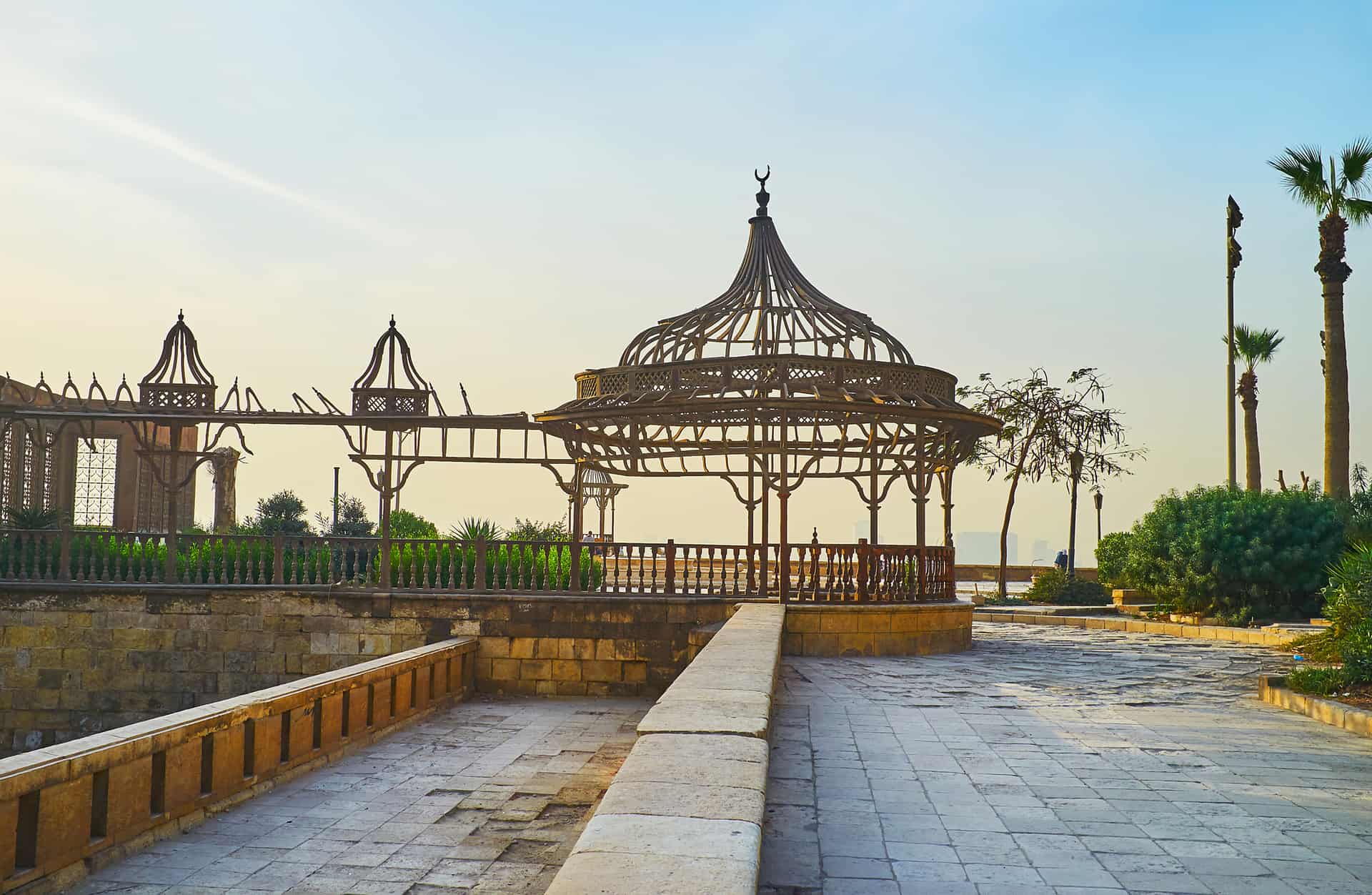The Stunning Muhammed Ali Palace in Shubra – 5 Facts and More

Updated On: April 07, 2024 by Salma Ihab
Egypt is a fantastic destination for those fond of unravelling past secrets. It embraces more than a few historical landmarks that most passionate travellers sought after.
The Muhammed Ali Palace is one of Egypt’s most significant sites. It reveals a great story about one of Egypt’s influencing rulers and unfolds the secrets of a whole dynasty the country had gone through.
The Reign of Muhammed Ali Pasha
Muhammed Ali Pasha was one of Egypt’s most prevailing rulers throughout history. He took power during the civil war in Egypt between three different parties: the Ottoman Turks, the Albanians, and the Mamluks of Egypt.
The war lasted for almost four years, from 1803 until 1807. As an Albanian, he managed to take over the authority of Egypt during the war period. After announcing himself as the new ruler of Egypt in 1805, he significantly contributed to the expansion and development of the country.
Many buildings have been constructed during the reign of the Muhammed Ali dynasty, including the Alabaster Mosque, the palace, and more.
Egypt had been through one of its prosperous periods during the reign of the Muhammed Ali dynasty; he was a prevalent ruler who succeeded in sending Egypt up to the world of modernism. The whole community of Egypt, along with its rationalized economy, notched up to a whole new level during Muhammed Ali’s reign.
His reign was entirely dedicated to bringing European advancements to the land of Egypt. To turn the objective into reality, he sent most Egyptian students to study abroad and professionally trained the military.
His reign was also the best span in which Egypt’s education and health were at their finest. Schools and hospitals were built by the most educated Egyptians and the Europeans, giving opportunities for everyone to get educated and have a decent life.
The Magnificence of Muhammed Ali’s Palace
Muhammed Ali’s dynasty was indeed the ultimate span of Egypt’s history. He had positively influenced the country in so many ways. His impact lasted for as many years, and his name is still remembered today. On the other hand, Muhammed Ali’s developments in Egypt were one thing, while contributing to constructing the country was another.
He had contributed to establishing more than a few buildings within the land of Egypt. Muhammed Ali’s palace may be one of the most prevalent ones; however, several other buildings kept his name reviving.
The Palace was the official residence. It is located in Shubra El-Kheyma- a district in the north of Bulaq and was far from the previous seat of government by then.
The palace exists in the surrounding area of the Mukattam Hills. By the time of the palace’s construction, the district of Shubra was still a void area. That makes the palace one of the very first significant constructions that Shubra has ever witnessed. It was probably a point of attraction that allowed the district to observe urban developments. Shubra has transformed into a residential area thanks to the palace.
At the beginning of the establishment, the district was an agricultural area with an elegant palace. However, it changed into a sophisticated suburban area and then to one of the most crowded zones around Cairo and a top tourist attraction.
The Story of Muhammed Ali’s Palace
The Palace is a magnificently colossal structure that covers almost 150 acres. Its construction had lasted for almost a century. It started during the early years of his ruling span, and its full completion was in 1922. The external appearance of the palace resembles that of the Turkish style; it embraces a European-Turkish style, as requested by Muhammed Ali Pasha. The designers were Armenian and Turkish; probably, he hired them to make sure they were fully aware of the dimensions of his inquiry.
Although the palace’s architectural style adopts a European influence, the interiors have mixed styles ranging from European to Oriental. Initially, the palace consisted of thirteen buildings- no wonder it covered about 150 acres. However, today’s palace looks a lot different than it used to be, for there are only three buildings left out of them.
The palace had been originally the residential house of Muhammed Ali Pasha. Above and beyond, it also served as a guest house for foreign ambassadors and royal family members.
The interior of the palace was full of ceilings that contained more than a few decorative designs. This includes floral patterns and several portraits of Muhammed Ali Pasha and his son. What makes the internal decorations captivating is the fact that there is a blend between the European and Islamic approaches. Muhammed Ali was keen on showing both worlds- the one he came from and the one he had ruled.
This fascinating palace was the first building in Egypt to use an electric lighting system. The construction introduced Egypt to one of the most enthralling innovations of the modern world for the first time.
The Brilliance of the Glorious Water Element
Besides the superb architectural structure that Muhammed Ali’s Palace holds, there is more than just its appealing sighting that makes it marvellous. Muhammed Ali’s palace depended on using the magic of the water element. The palace contains a vast pool that provides an exquisite reflection, giving the palace an unrivalled sight to behold. Around the pool, bronze barriers cover the windows that overlook the splendid reflection of the water.
Muhammed Ali built a water wheel tower inside the palace, which is the most ancient structure in the world. The waterwheel tower sits in the middle of gardens that are laden with fruits and vegetables. Above and beyond, it consists of four water wells that help lift the water using machines. Despite the norm of Egyptian culture, the waterwheel broke the tradition of using animals for lifting and used machines instead.
The Fountain Villa is another water-based structure you will enjoy witnessing in Muhammed Ali’s palace. This structure sits in the middle of the gardens all over the palace. A French designer who happened to be a close friend of Muhammed Ali was responsible for this villa. It consists of vessel-shaped structures that contain more than a few doors in front, and there are marble steps. Each step before the doors leads to a different fountain within the villa.
The Fountain Villa contains halls that supplement its extension. These halls are splendidly decorated with astonishing embellishments. One of these halls has its ground furrowed with Turkish Walnut tree wood. It is called either the Walnut Hall or, simply, the Salon, and it is definitely the most premium among all of them.
Preservation Efforts
In recent years, efforts have been made to preserve and restore the Muhammed Ali Palace, ensuring that future generations can continue to marvel at its splendour. The Egyptian government, in collaboration with heritage conservation organizations, has undertaken extensive restoration work to repair damage caused by years of neglect and decay. Today, the palace stands as a shining example of Egypt’s commitment to preserving its cultural heritage and promoting tourism in the region.
Visitors to the Muhammed Ali Palace can embark on guided tours that offer insight into the history and significance of this architectural masterpiece. Knowledgeable guides lead visitors through the palace’s many rooms and gardens, regaling them with tales of its former occupants and the events that shaped its destiny. For those with a keen interest in history and architecture, a visit to the Muhammed Ali Palace is an unforgettable experience that offers a glimpse into Egypt’s glorious past.
Muhammed Ali’s Buildings in Egypt
As the most prevalent ruler of Egypt, he managed to build a lot of other constructions during his reign. Muhammed Ali’s palace was not the only contribution to the development that Muhammed Ali made. He managed to bring up several other buildings that were quite as fascinating as the palace.
Muhammed Ali’s Mosque (The Alabaster Mosque)
Besides Muhammed Ali’s palace, the Alabaster mosque is one more structure to count as one of Muhammed Ali’s buildings. He managed to bring them to life during the time of his rule. The mosque is commonly known as the Great Mosque of Muhammed Ali Pasha. The Citadel of Cairo, which was built by Saladin, embraces the grand mosque. Long after Saladin’s death, Muhammed Ali Pasha went deeper into developing the fortress.
Both the mosque and the citadel are some of Egypt’s most famous attractions, along with Muhammed Ali’s palace. The reason behind the construction of the Great Mosque of Muhammed Ali Pasha was the death of his son. After his eldest son, Tusun Pasha, kicked the bucket, Muhammed Ali constructed that mosque in his memory.
The mosque has been around since 1816. It had undergone several renovations until it became what it is today. This mosque has quickly become a landmark, for it holds much of Egypt’s history. Above and beyond, the mosque’s location is one more factor that helped make it a targeted destination for tourists in Cairo.
Al- Gawhara Palace
Muhammed Ali’s buildings had expanded to include one more palace. Al-Gawhara palace was it; Al-Gawhara means the Jewelry in Arabic. Muhammed Ali built up during the first decade of his reign; in 1814. Like most of Muhammed Ali’s buildings, the palace embraces several cultural influences. Different artists from different cultural backgrounds, including Turkish, Greek, and, of course, Albanians, had designed the palace.
For all the travel bugs out there, if Egypt is your next destination, don’t miss out on visiting Muhammed Ali’s palace and witnessing its exquisiteness.
Have you ever visited Muhammed Ali’s Palace in Shubra? Let us know your thoughts in the comments below.
More Fascinating Egypt Blogs by ConnollyCove: The Pharaonic Village in Giza | Egyptian Food – A Blend of Cultures | Must-See Places in Egypt | Must-See Places in Egypt






